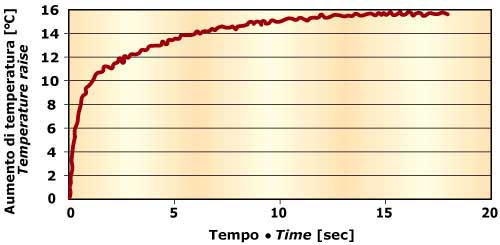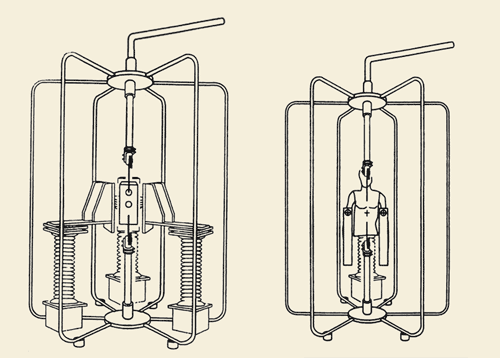Measuring the Performance of Fabric Systems to Protect Against the Thermal Effects of Electric ArcsDuring the last few years, there has been much progress in understanding the nature of electric arc accidents and their potential impact on nearby workers. Many thousands of workers are potentially at risk, including those who work in industrial environments such as chemical plants and oil refineries, as well those who work more obviously with electricity in utilities etc. The damaging effect of radiant and convective heat on human skin is well documented, thanks to the work of Stoll et al., and threshold levels to second degree burns have been established. Calorimeter sensors have been developed to represent the response of human skin to heat exposure, enabling measurements to be made during the reproduction of both flash fires and electric arcs under controlled laboratory conditions. With knowledge of the conditions (current, voltage, duration, etc.) of a potential electric arc event, the total incident heat energy may be estimated. Arc testing tools are available to quantify the Arc Thermal Performance Value (ATPV) of a proposed fabric system for PPE. The level of protection must match the size of the hazard and, in addition to this essential characteristic of thermal protection, the chosen PPE system must also be comfortable and durable, in order to meet the demands of the discerning wearer.  Genevieve Laverty, Du Pont Engineering FibresIntroductionThe past decade has seen a significant advance in understanding the nature of electric arc accidents and the hazards that they pose to people working in their vicinity. In addition to the more obvious risks of electrocution and physical shock, there is another, perhaps more subtle, risk, which is the thermal effect of the electric arc event. Subtle because there is a large proportion of radiant heat energy generated, and while this is invisible to the human eye, it can have severe and even fatal consequences by causing second and third degree burns to human skin. Most, if not all, European countries record the number of electric arc accidents per year, the type of installation in which the event occurred, and the electrical conditions including the voltage of the event. For example, in 1997 in Sweden, where awareness and security regulations are already very strong, there were 48 electric arc accidents reported. Approximately one third of these accidents occurred in distribution networks, and another one third took place in manufacturing industries. Almost 90% of these accidents occurred at low voltage, i.e. at less than 1000V. More than half of them occurred at switching assemblies, including cable distribution cabinets. Meanwhile, during the last 2 to 3 years in the UK, there have been a number of fatal and serious burn injury incidents where underground cables have been struck. Between 1987 and 1998 there were reported to the Health and Safety Executive 10 fatalities, 727 major injury incidents and 1197 absences of over 3 days. The majority involved low voltage cables. During this same period, there were in excess of 68,250 incidents of cables being damaged during excavation work. While the hazard to high voltage workers is well appreciated and measures have been taken to provide these workers with appropriate Personal Protective Equipment (PPE), there is much less awareness regarding the risk to hundreds of thousands of industrial workers throughout Europe who could potentially meet with severe or even fatal consequences due to an electric arc accident at low voltage, giving rise to second and third degree burns. This large number of people includes not only electric utility workers but also employees in the petrochemical and chemical industries, gas and water utilities and oil refineries. The cost of an electric arc accident has been estimated, in different countries, to be of the order of 0.5 million DM, considering medical treatment for the victim of the accident, lost time from work, damage to equipment and legal costs and compensation. So it is beneficial to the employer to assess the size of the risk in that particular working environment and to provide the correct PPE to his workforce. This is anyway a requirement of the EC Directive 89/686 [1]. It must be stressed that wearing Personal Protective Equipment (PPE) never replaces the need to focus on safe operating practices. The goal should be to remove the source of the risk completely. In working with electricity, that means the first goal should be to avoid working live. Where live working cannot be avoided, the correct level of PPE must be provided to the workforce, based on a risk assessment of the specific working environment. The purpose of PPE which protects against the thermal effects of electric arcs is to provide escape time and reduce burn injury levels, thereby increasing the chance of survival for the victim of the accident. Measurement of Burn InjuriesThe work of Stoll and Chianta in the 1960's [2,3] helped to quantify the response of human skin and tissue to sources of heat energy. When human tissue is raised from the normal blood temperature of 36.5°C to above 44°C, skin burns begin to occur, at a rate that depends on the raised temperature level. For example, at 50°C, damage to the skin is 100 times faster than at 45°C, and at 72°C total destructionf the epidermis occurs almost instantaneously. Considering that the intense heat energy of an electric arc can generate temperatures of about 13000°C, more than twice the temperature of the sun's surface [4], a person in the vicinity of such an accident has a very high risk of receiving severe second and third degree body burns. Calorimeter sensors have been developed since the earlier work of Stoll, Chianta and others, to represent the way in which human skin responds to a rise in temperature, and to predict the onset of second degree burns under controlled laboratory testing conditions. These sensors are essentially copper discs of known heat capacity, with thermocouples attached behind, which transmit the temperature rise information to a computer programme that can produce a graphical output. Figure 1 shows a typical output known as the Stoll curve, i.e. the rate of temperature rise (in degrees C) on the sensor face. Tests may be carried out on a bench-top scale, using controlled sources of convective heat, radiant heat, or a combination of both. Once the level of heat energy from the source is known, fabric systems can be placed just in front of the sensor, and the amount by which the fabric prevents the heat energy from reaching the sensor is a measure of its thermal protective performance. This protection factor may be expressed in cal/cm2, and the larger this number, the greater the protection factor of the fabric system. This allows different fabric systems to be rated in terms of their relative thermal protective performance.
In addition to testing fabrics on a bench-top scale, this theory has been extended to the testing of garment systems on mannequins that are instrumented in a similar way with calorimeter sensors linked to computer software for quantitative analysis. One such mannequin is the DuPont Thermo-Man®, equipped with 122 sensors placed all over the body. A flash fire of appropriate duration is generated in the burn chamber and the software translates the temperature rise data into percentages of predicted second and third degree burns to the body. Since the energy in an electric arc accident is very much greater than that of a typical flash fire, specialised facilities to generate controlled arc events have also been developed. One such facility is the DuPont Arc-Man™ situated near to DuPont's European Technical Centre in Geneva. Based on American Standards ASTM F1958 and F1959 [5,6], these test facilities can assist end-users in both quantitative and qualitative assessments of fabric and garment systems that are intended to provide personal protection against the thermal effects of an electric arc event. Figure 2 shows the equipment layout for fabric and garment testing
Protection Against the Thermal Effects of Electric ArcsThe first step to achieving this improvement lies with the employer, who must carry out a risk assessment in that specific working environment. The employer must estimate the worst-case scenario in terms of maximum arc current, arc voltage, arc gap and arc duration, as well as the typical distance between a worker and the source of an accidental arc. With these input data, it is possible to calculate, in cal/cm2, the incident heat energy of the arc in those specific working conditions. Meanwhile, by running multiple arc exposure tests on a fabric system, using arc testing facilities such as the DuPont Arc-Man™, it is possible to measure the thermal protective performance of that fabric system, again expressed in cal/cm2. In the specific case of electric arc protection, this thermal protective performance factor is called the Arc Thermal Performance Value, or ATPV. It is defined as the maximum incident thermal energy that the fabric can support before the wearer will suffer the onset of second degree burns. Obviously, the larger this ATPV, the better. The combined learnings from the employer's risk assessment and the measurement of ATP values for a variety of fabric systems enable the employer to choose the correct protective clothing system for his workers. For example, if the risk assessment showed that, in the worst case, an electric arc accident would generate 6 cal/cm2 of incident heat energy, then appropriate protective clothing must have an ATP value of AT LEAST 6 cal/cm2. DuPont has carried out more than 8000 arc tests under controlled laboratory conditions, and has prepared a guideline chart (Figure 3) which indicates possible clothing combinations for different industrial working conditions [7,8,9]. According to this chart, for example, a working environment with a worst-case arc incident heat energy of 6 cal/cm2 would fall into category 2A. For this specific case, a single layer of flame-resistant clothing over normal (untreated) cotton underwear should provide sufficient protection against the thermal effects of that arc, because the multiple tests of DuPont have shown that this fabric combination typically has an ATP value of minimum 8 cal/cm2.
As the weight of the fabric system increases, so does its ATP value. In addition, two layers of lightweight fabric offer considerably more arc thermal protection than one heavy-weight layer, and more than the sum of the two individual layers, because of the pocket of insulating air between the two fabrics. As an example, a Nomex (Delta C fabric at 225 g/m2 has an ATPV of 6 cal/cm2. A double layer of the same fabric has an ATPV, not of 12 cal/cm2 (2 x 6), but of 22 cal/cm2, a bonus of 10 cal/cm2 added thermal protection. Returning to the example of a working environment where the worst-case arc event has an incident heat energy of 6 cal/cm2: this energy level may be achieved in a variety of ways, because the calculation of incident energy combines the effect of arc current, arc voltage, arc duration, arc gap and distance between worker and arc. One way in which 6 cal/cm2 may be achieved is shown in Figure 4, where the arc current is 4 kiloamperes, the arc duration is 0.5 seconds, the arc voltage is 300 V, the arc gap is 15 cm, and the distance between worker and arc source is 30 cm (representing the distance from elbow to fingertip, the typical working practice for low voltage operations). It can be seen from this table that the arc incident heat energy increases significantly if the arc current or the arc duration should increase. The same is true for the arc gap.
The relation to the distance between worker and arc source is the reverse and is very critical: as the distance decreases by half, i.e. as the worker approaches the arc source, the incident energy experienced by that worker in the case of an arc event will be four times greater than what he would have experienced at the original working distance. To say this another way, the effect of an electric arc accident can be greatly reduced by changing work practices so that workers are further away from the energised equipment. It is also clear that, at very high incident energy levels, workers cannot obtain sufficient arc thermal protection by PPE alone, and should work with hook sticks that add extra distance between themselves and the energised equipment. A complementary test to that of ATPV measurement of fabric systems is garment testing at the arc lab facilities. This is a more qualitative approach, and allows a visual inspection of the garment made from the fabric system whose ATPV is already known. The garment test shows if there is any ignition, melting or breakopen of the fabric. Also, if the calorimeter sensors are linked to the appropriate computer software, a graph showing the Stoll curve can be generated. The corresponding curve for the garment will fall either above or below the reference Stoll curve. If the garment response curve is above the reference Stoll curve, it indicates that a person wearing that garment in the specific electrical conditions of that test, would not be sufficiently protected against second degree burns in the event of an arc accident. If the garment curve falls below the Stoll curve, it means that this garment would provide an appropriate level of arc thermal protection under those specific working conditions. It must be emphasised, however, thatno extrapolation may be made from individual garment tests to other testing conditions. For this reason, it is more scientific and reliable to make ATPV measurements on fabric systems rather than qualitative garment tests. ConclusionThe hazard of electric arc accidents is real, and the consequences are costly, both in financial terms and in the cost to human life. As is the case for every other hazardous situation in the workplace, it is fully the responsibility of the employer to carry out a risk assessment of his working environment and to provide the appropriate level of Personal Protective Equipment (PPE) to his workers in situations where an electric arc accident may occur [1]. The protective clothing must be selected to match the worst-case exposure for any given task. Under-protection has obvious consequences in terms of burn injury level should an accident occur. Over-protection is also to be avoided, because this usually means heavy and cumbersome clothing systems, with a negative impact on the comfort level to the worker. Heavy clothing can raise the temptation to unbutton shirt tops or to roll up shirt sleeves, or even to take off shirts or jackets that make up the PPE system. There is, therefore, an optimum balance between thermal protection and comfort, to be found in the system of correct weight and correct number of layers of fabric in the system. The design of the garments can also make a difference to the overall comfort and the thermal protective performance: loose-fitting clothing provides additional thermal protection due to air spaces between the fabric and the body. The fabric system must also be durable, in order to be financially viable to the employer who is kitting out his workforce with PPE. DuPont's offering of Nomex® aramid fibres is an ideal candidate for making fabrics and garments which have inherent flame resistance, which do not ignite, melt or continue to burn in the event of an arc accident, which resist breakopen and which insulate the wearer from the incident heat energy. By offering the correct level of arc thermal protection balanced with comfort and durability, Nomex® is a very interesting option for the employer who is choosing to protect his workers against the thermal effects of electric arc events. Nomex® and Thermo-Man® are DuPont registered trademarks. Bibliography[1] EC Directive 89/686/EEC, "On the approximation of the laws of the Member States relating to Personal Protective Equipment", Dec 1989. [2] A.M.Stoll, M.A.Chianta, "Method and Rating System for Evaluation of Thermal Protection", Aerospace Medicine, Vol.40, No.11, Nov 1969. [3] A.M.Stoll, M.A.Chianta, "Burn Production and Prevention in Convective and Radiant Heat Transfer", Aerospace Medicine, Vol.39, No.10, Oct 1968. [4] R.H.Lee, "The Other Electrical Hazard: Electric Arc Blast Burns", IEEE Transactions on Industry Applications, Vol.1A-18, No.3, May/June 1982. [5] "Standard Test Method for Determining the Arc Thermal Performance Value of Materials for Clothing", ASTM Standard F1959/F1959M-99, 1999. [6] "Standard Test Method for Determining the Ignitability of Non-flame-Resistant Materials for Clothing by Electric Arc Exposure Method Using Mannequins", ASTM Standard F1958/F1958M-99, 1999. [7] T.E.Neal, A.H.Bingham, R.L.Doughty, "Protective Clothing Guidelines for Electric Arc Exposure", IEEE Paper No. PCIC-96-34, p.281, 1996. [8] R.L.Doughty, T.E.Neal, T.A.Dear, A.H.Bingham, "Testing Update on Protective Clothing & Equipment for Electric Arc Exposure", IEEE Paper No. PCIC-97-35, p.323, 1997. [9] R.L.Doughty, T.E.Neal, H.Landis Floyd II, "Predicting Incident Energy to Better Manage the Electric Arc Hazard on 600 V Power Distribution Systems", IEEE Paper No. PCIC-98-36, 1998. |
This article is published on NT New Textiles, see the contents.

